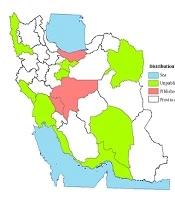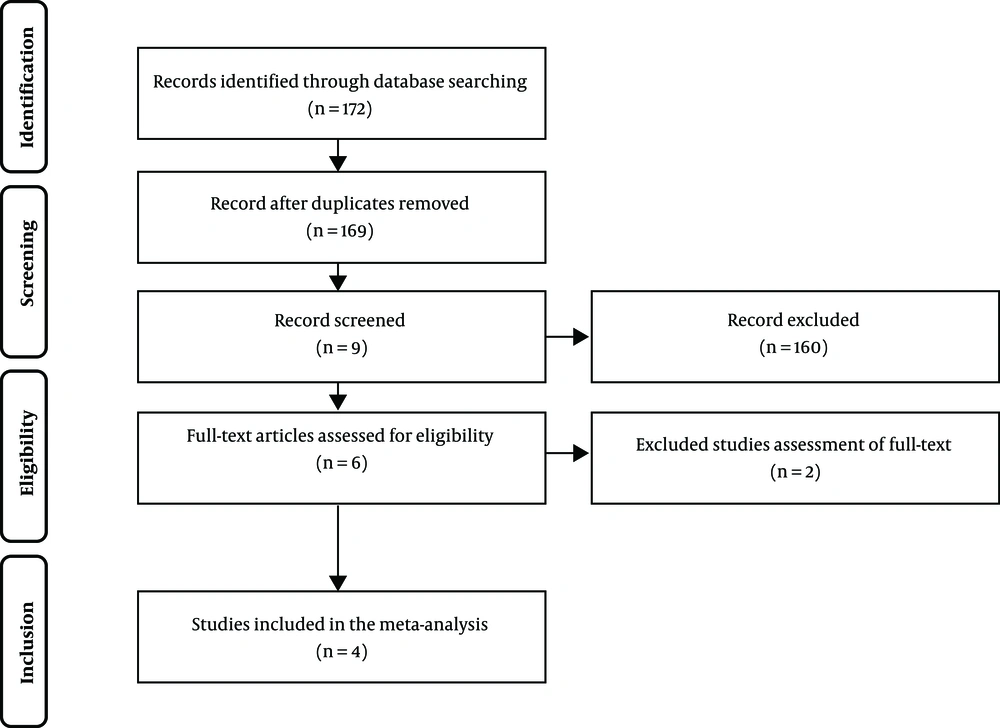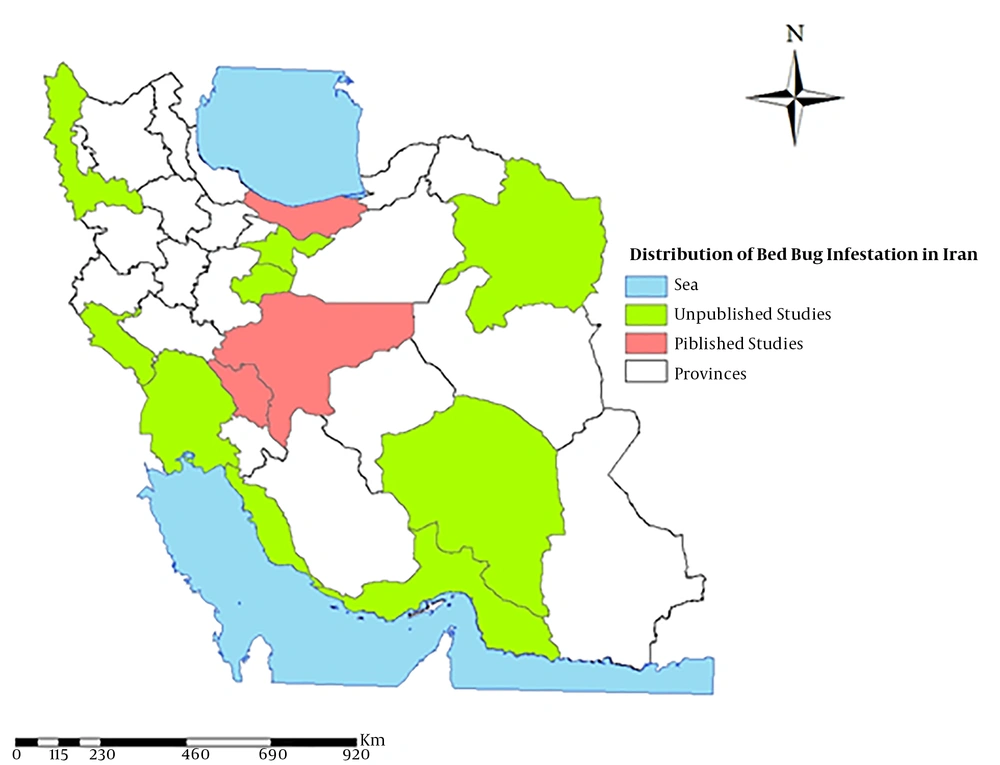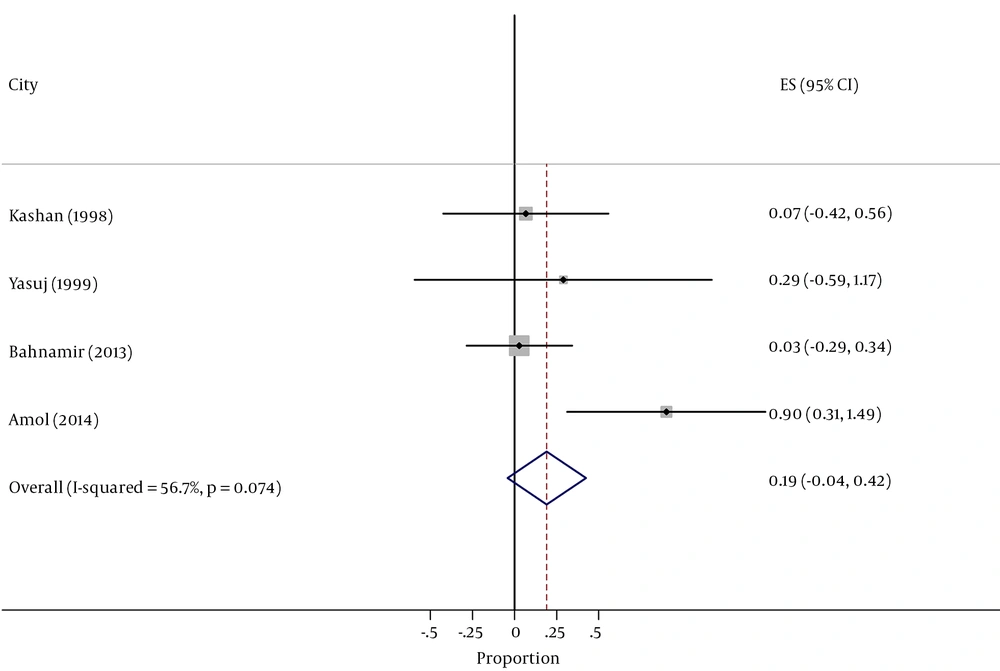1. Background
The common bed bug (Cimex lectularius) is a small hematophagous and wingless insect of the order of Hemiptera and the Cimex genus. This insect is mainly nocturnal and feeds specifically on humans (1, 2). The bed bug’s lifetime varies between 6 to 12 months according to different climates and conditions (3, 4). This insect enters the nymphal stage after one blood meal and the mature insect after several months can live without feeding (5).
This insect has adapted to living in human communities and can only be seen during feeding. This wingless bed bug mostly spreads indirectly by luggage, clothes, furniture, and laundry. In general, the spread of the bed bug from one point to another is done by objects and material. Travelers with handbags and other baggage going from one hotel to another can carry the bed bug in their luggage over to the next hotel (5-7).
In recent years, the bed bug infestations have been reported from all over the world, in areas such as Europe (Italy, England, France, Switzerland, Spain, Denmark, Sweden, Scandinavia), the Americas (The US, Brazil), Asia (China, Thailand, Indonesia, Malaysia, Singapore, Kuwait, Iran), Africa (Nigeria), and Australia (8).
The reason for the increase in the common bed bug infestation can be attributed to several factors, some of which are as follows: an increase in the international travels, pesticide resistance as well as the lack of people’s general knowledge in control and prevention (9-11). The early recognition of bed bug due to higher knowledge and awareness can help to control this annoying insect (2).
Although 28 human pathogens have been identified in the bed bugs, but they have never been able to transmit to humans (2). The common bed bug causes undesirable effects such as insomnia, anxiety, depression, and also allergic symptoms (12). The reactions, including itching skin, papules, blisters, and nodules were observed on the forearm of Iranian man who lived in the southwest of Iran (13). Some green pesticides like Oregano oil can protect against the individual blood feeding activity of the nocturnal insect (8).
The present study aims to report the condition of bed bug prevalence and survey the effect of environmental factors on the insect infestation using systematic review and meta-analysis techniques in Iran.
2. Objectives
This systematic review reflects the distribution of bed bugs and this is a hypothesis about the relationship between the mean of humidity and temperature with the bed bug infestation that this meta-analysis evaluates.
3. Methods
3.1. Search Strategy
The search strategy was designed to identify the relevant electronic studies published from January 1995 to February 2019. We searched Iranian databases, including Iranmedex, SID, Magiran and Irandoc, and also searched in the international databases, such as Google Scholar, PubMed, Scopus and ScienceDirect. All English and Persian papers were screened and the documents with infestation ratio entered in the meta-analysis. Other research without the frequency of bed bug including allergic reaction due to the insect bite and bed bug control strategy were excluded from the analysis. Appropriate English and Persian equivalent keywords like “bed bug”, “Cimex lectularius”, “prevalence”, “outbreak” and “Iran” were used to finding the related articles (Figure 1). The important information such as first author, date and place of study, prevalence of bed bug, the number of infested places, mean of humidity and temperature were extracted from the papers.
3.2. Data Synthesis and Statistical Analysis
Heterogeneity and inconsistency were evaluated using Cochrane Q and I2 statistics, respectively (14). In addition, Egger’s regression test was implemented to assess small study effects (15). According to results of heterogeneity test, the pool estimations of prevalence of common bed bug infestation and its 95% confidence intervals (CI) were calculated either using Der Simonian and Laird’s random effects method or Mantel Haenszel’s fixed effects method (16, 17). Statistical analysis was performed using STATA12 software (STATA Corporation, College Station, Texas). Also, P < 0.05 was considered to be statistically significant for all test results as well as summary prevalence.
4. Results
In the first step of searching 172 articles were identified, then after screening and considering eligibility only four studies were entered into the research (Table 1).
Characteristics of the Included Studies
The results of the study showed that only four articles had studied the spread of the common bed bug in three provinces of Iran. Among these, three articles were found in Iranian databases, two of which were in Persian and one was published in an international database in English. With regard to the searched keywords in Iranian databases, two were found in SID (18, 19), and one was found in the Magiran database (21). Nothing was found in Iranmedex and Irandoc using the searched keywords. Also, using the searched keywords in international databases, only one article (20), was found which was indexed in both Google Scholar and ScienceDirect. Moreover, in Scopus database, Dehghani et al. (21) was found which was also available in the Iranian database of Magiran. In PubMed no article was found for the searched keywords. Concerning the searched keywords, firstly, 38 articles were found in Google Scholar database and 10 articles in Science direct database, only one of which (20), was related to our study and the rest were excluded. According to previous studies, the prevalence of bed bug infestation was reported from 2.8% to 90.1% in Iran. Figure 2 shows the distribution of the common bed bug in Iran.
The bedroom was confirmed as the most infested areas with the nymph and adult of the insect and the sitting room was the second most infested (20). The investigation of the correlation between social factors and bed bug prevalence in Mazandaran province showed all infested families were owners, 85.71% traveled to infested areas, 28.57% used second hand instruments and 78.57% controlled the infestation by themselves (20). About 41% of the bite frequency happened to the age group of 35 - 44 years. Also, 38.3%, 23.7%, 14.4% and 3.9% of participants had been bitten on the hand, abdomen and neck, respectively (18).
After screening the titles and abstracts, and full-text of articles, studies which met the inclusion criteria and were included in the analysis. The selection process was presented in a PRISMA flow chart (Figure 3). Tables 1 and 2 show the studies included in this analysis and summarizes the characteristics and prevalence of selected outcome events. The Egger test showed that there is no small sample bias across studies (t = 1.12, P = 0.38). However, the results of the heterogeneity test showed that our studies were heterogeneous (Q = 674, P < 0.001 and I2 = 99%). The weighted mean of prevalence of common bed bug infestation were obtained using random effects method. The summary estimate of the prevalence was 0.28 [95% CI: (-0.01 - 0.71)] (Figure 3). We could not perform meta-regression analysis to assess the association between mean of humidity and temperature and prevalence of common bed bug infestation due to the heterogeneous studies.
| Geographic Location | No. of Village | No. of Dormitories |
|---|---|---|
| Bahnamir | 8 | 0 |
| Kashan | 10 | 0 |
| Yasuj | 0 | 3 |
| Amol | 1 | 0 |
| No. of Homes Infested | Total | |
| Bahnamir | 14 | 500 |
| Kashan | 33 | 495 |
| Yasuj | 22 | 76 |
| Amol | 164 | 182 |
| Prevalence of Common Bed Bug Infestation, % | ||
| Bahnamir | 2.8 | |
| Kashan | 6.7 | |
| Yasuj | 28.9 | |
| Amol | 90.1 | |
Detail of Prevalence of Common Bed Bug Infestation in This Study
5. Discussion
The present meta-analysis assessed the prevalence of the common bed bug in Iran and the paper has been reported mostly in areas with high humidity. Mazandaran province in the north of Iran is an example of one of these humid areas. Also, the spread of this pest in recent years has been reported in the southern and southwestern parts of Iran (Khuzestan, Hormozgan and Bushehr provinces) by health centers and urban pest control and health companies.
Only four articles were chosen based on inclusion criteria. Two studies have been done in Mazandaran province (villages around Bahnemir city and Polur village in Amol), another has been conducted in Isfahan province (villages in the north of Kashan), and the last was investigated the spread of common bed bugs in three student dormitories in Kohgiluye-and-Buyer Ahmad province (Yasuj).
Regarding the previous studies, the common bed bug is distributed in Iran due to the transmission by furniture and luggage from one place to another. Generally, the occurrence of bed bugs has happened more in public places such as dormitories, hotels, guesthouses, and prisons. In Iran, several studies have been done on the prevalence of the common bed bug in dormitories. Shahraki et al. (19), studied the prevalence of common bed bugs in student dormitories (one boy’s dormitory and one girl’s dormitory) in Yasuj. The results of the study showed that only 22 out of 76 rooms under study (29.8%) were infested.
The results, also showed that the frequency of infestation among girls was 14.48%, and among boys it was 6.67%, and the highest infestation was related to the bed bugs collected from the walls. The findings also revealed that girls are more sensitive to the bites than boys, and the most biting signs observed were in arms and legs (19).
The present study could not show the relationship between the mean of humidity and temperature with C. lectularius infestation due to the heterogeneous studies. Despite that, the survival and distribution of Cimex hemipterus depends on temperature, relative humidity, strain and sex (22). The natural habitat of bed bugs is indoor places where the insect can easily have access to the human host. Passive dispersal (transporting by human clothing, luggage and furniture) is also responsible for starting the bed bug infestation. Motevalli Haghi et al. (20) demonstrated high density of population and deprived circumstances as risk factors of bed bug infestation. Furthermore, special geographical conditions and environmental factors were not reported as a determinant of the infestation risk of bed bugs (23, 24).
Iran is a vast country with many neighbors, which cause the transmission of this pest in the country. Iraq, Saudi Arabia, United Arab Emirates (25) and Kuwait (26) are some of these neighbors. Iran has borders with these countries in the south and southwest and the provinces of Khuzestan, Bushehr and Hormozgan are in these areas.
6. Conclusions
In general, the results demonstrated a relatively high prevalence of the common bed bug in southern, southwestern and northern provinces of Iran. Moreover, Cimex lectularius can be called a neglected urban pest, which needs further investigation to know its distribution in the country.



